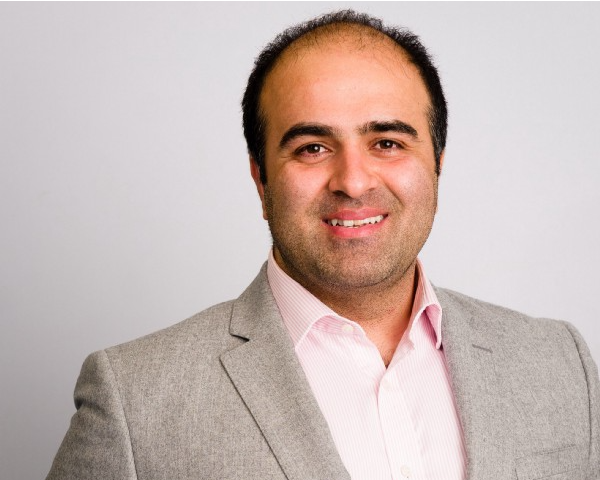Reza Khorshidi, Chief Scientist for global insurance company AIG, leads the company’s AI innovations and machine learning research. He is also a principal investigator for the Deep Medicine program at the University of Oxford’s Martin School, which is focused on healthcare innovation and the use of AI in digital health ecosystems. He obtained his DPhil ( PhD) in computational neuroscience and machine learning from the University of Oxford in 2010 and since then has been leading teams, research initiatives, and innovation projects in both academia and industry.
Khorshidi’s science team at AIG,a group of machine learning scientists, engineers, designers and product strategists,is primarily focused on the development of AI-first products: apps and software services that are design-led and employ machine learning to inform and assist their users. Such software products are designed to provide both AIG’s asset management and insurance arms with strategic differentiation in the market through the power of AI and design. Khorshidi recently spoke to The Innovator about AIG’s digital transformation and how the company is working with startups.
Q: What are some of the changes and challenges insurance companies are facing?
I think it comes down to two key changes: customer experience and financial challenges. When it comes to being insured consumers are asking ‘why can’t my experience be as quick and convenient as they are with Amazon or Uber?’ Today the enterprise software experience is far away from that, and hence customers find themselves in two parallel worlds. On the other hand, insurers are asking ‘how can we offer the best insurance products and risk services, without increasing the cost of an already-expensive value chain?’
The good news is that both these problems can be solved with an appropriate digital strategy, with emphasis on design and AI to re-imagine and improve every touch point from underwriting and claims, to risk mitigation services and internal operations.
To meet these new expectations on both sides, we are improving the overall experience of being our customer — from consumer insurance products to more complex commercial products. This goes well beyond beautiful user interfaces and involves some really big challenges tied to the re-imagination of insurance value proposition in light of technologies such as AI.
Q: What sort of new products are you introducing?
As the Chief Scientist for the group my job is to bring AI-led digital transformation to both the investment and insurance arms of AIG. We do this through building AI-first products: apps and software services that are design-led and employ machine learning to inform and assist their users.
A simple example of informing is when at the beginning of a car journey, your iPhone tells you how many minutes away from your destination you are, without you asking. Behind this simple experience are multiple predictive models such as ‘Are you in a moving car? Where might your destination be? Do you want to see a push notification telling you the time you will arrive there? How long is the journey likely to take?.’ Therefore, in order to have a pleasant and accurate overall experience, many AI algorithms need to be accurate; this level of accuracy for AI, has only become possible in the past few years.
Now, let’s consider policy renewal in insurance; won’t it be great if the policy admin app could send underwriters a push notification to inform them that ‘company ABC’s policy is at high risk of attrition; it will take you X days to renew this and hence you should start the process now?’ Of course, behind this simple message will be many predictive models: ‘Do you want to renew the policy? Will the client be willing to renew? How long will it take you to do the renewal process?.’
A simple example of assisting is what Google Duplex does; an AI agent doing things on behalf of human. Chatbots and conversational AI agents that are dealing with user requests / customer care are also good examples of AI in assist mode. Now, in the same insurance use case, imagine the underwriter could ask the app to renew the policy on his/her behalf; this will save underwriters’ time from being spent on finding the contract documents and doing modifications such as changing the dates, and instead spend that time on improved customer care such as giving risk advice.This is the true north for AI-led digital transformation in insurance and other industries, and this is what my team does.
Q: Are you developing the expertise in-house or are you working with startups?
We are actively talking to startups. However, when something is of high strategic importance and is not commoditized already (e.g., no startup has a suitable solution for) we usually build; for example, AI for asset management.
Q: What advice would you give to other corporates?
The first and most important point is to not make startup partnerships an alternative to investment in internal talent. Secondly, make sure you have a clear vision and goals for your business and then define partnerships with startups to achieve these goals; avoid POC (proof of concept agreements to prove a product’s viability) for the sake of having POCs with cool startups. And lastly, remember that, what increases the odds of success, even with a great startup, is a strong team on your side; make sure the right experts (ideally with situational humility and appetite for taking risk) are in the loop when forming such partnerships.







